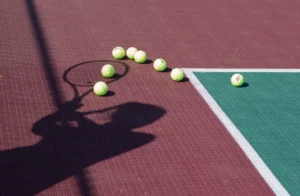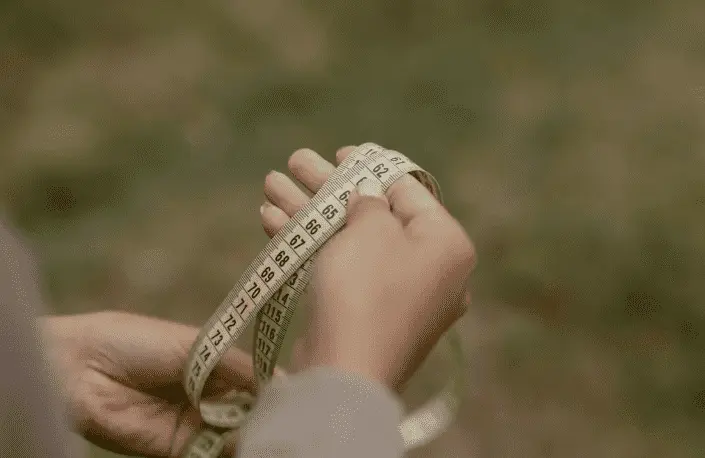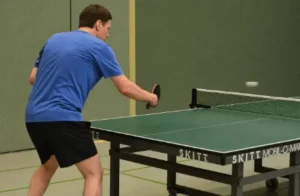The Standard Table Tennis Ball Measurements?
Table tennis solely requires the use of a ball. This will very much determine the quality. When you’re a professional or just a person who plays ping-pong as a passion, Realizing the Standard Table Tennis Ball Measurements is a critical step.
The article is meant to cover everything that is needed including the speed, school book, material, and regulations for table tennis balls. Also, some nice facts that may develop their knowledge will be included.
The History of Table Tennis Balls
Before going into the information, it’s worthy of noting how the Standard Table Tennis Ball Measurements? Improved over the years.
In the early days of table tennis, balls were made of leather or cork, with some being created with plastic. As the game gained popularity, plastic became the standard material for decades until recent discoveries led to the release of plastic balls. These advance balls are not only safer but also more ecological friendly.
The move to plastic balls took place in July 2014, when the International Table Tennis Federation (ITTF) officially adopted them. Today, all official competitions and tournaments use plastic (poly) balls, which are slightly different from their celluloid predecessors.
The Standard Table Tennis Ball Measurements
The standard table tennis ball measurements and specifications are regulated by the ITTF to ensure consistency in professional play. Let’s break down the key aspects of a table tennis ball:

1. Diameter
The official activity of diameter of a table tennis ball is 40 millimeters (mm). This width was introduced in the year 2000, renewing the previously used 38 mm balls. The adjustment was made to calm down the game a bit and make it more fun to watch, as extra-large balls are easier to see.
In casual settings, you may still come across 38 mm balls, but for elite competitions, the 40 mm diameter is the rule.
2. Weight
The weigh-in of an accepted table tennis ball needs to be 2.7 grams. This precise weight helps guarantee that the ball behaves consistently during play, allowing for consistent competition conditions. A ball that is too light or too heavy can impact the speed and bounce, significantly altering the game’s mechanics.
3. Material
Table tennis balls were historically made from plastic, a dangerous and unstable material. Fortunately, with the switch to plastic, modern balls are formed of polyethylene or other like material. These recyclable plastic balls are reusable, more resistant to corrosion, and less dangerous to use.
The ITTF approved plastic balls have been made to mimic the bounce and feel of the old celluloid balls as closely as can be replicated, ensuring that the replacement was painless for professional players.
4. Bounce
The velocity of a table tennis ball is another relevant element to consider. According to ITTF specifications, when pushed from a height of 30.5 centimeters onto a conventional table tennis table, the ball must propel itself back to a sitting position between 23 and 26 centimeters. This means that the ball has the perfect shape and repeatability during play.
5. Hardness
The hardness of a table tennis ball is also measured. It must be sufficiently firm so that it does not deform too much when struck by a paddle. A softer ball may not rebound well, affecting the overall quality of the game.
6. Color and Finish
Table tennis balls come in two official colors: white and orange. These colors are chosen because they provide maximum visibility against the dark surfaces of most table tennis tables.
The choice in between white and brown varies based on the natural light conditions and the color of the table. A matte finish is fitted to the ball to reduce visibility under direct lights.
In addition to color, the ball’s surface must be smooth and free from any visible seams or imperfections. This ensures a consistent spin and bounce during play.
Star Ratings of Table Tennis Balls

You may have already noticed that table tennis balls come with a variety of star ratings, usually which range from 1-star to 3-star. These ratings speak to the quality and long-term resilience of the ball:
- 1-Star Balls: These are typically used for recreational purposes. They may have minor imperfections and are not suitable for professional or tournament play.
- 2-Star Balls: These are of higher quality than 1-star balls, but still fall short of the standards required for competitive play. They’re great for practice and casual games.
- 3-Star Balls: These are the finest quality table tennis balls, okayed for use in official match play. They are continually tested for exactness in size, weight, elasticity, and roundness.
If you’re serious about table tennis or plan to compete, it’s advisable to use 3-star balls to ensure a professional playing experience.
Why Table Tennis Ball Specifications Matter
The standardized measurements and specifications of table tennis balls are crucial for ensuring fairness in the game. If the balls used in tournaments were inconsistent.
It would lead to an unfair advantage or disadvantage for players. Standardization ensures that all players, regardless of location or competition level, experience the same conditions, allowing skill and strategy to shine.
Plus, variations in ball shape can have a huge impact on the game’s momentum, spin, and overall game play. A ball that’s too small or heavy can impair your accuracy, while a poor-quality ball may break rapidly or lose its shape over time.
Making The Right Table Tennis Ball
A few tips to help you find the right table tennis ball for your needs:
For Recreational Matches: For casual games or practice sessions, 1- or 2-star balls work just fine. Not only are these balls inexpensive and durable, but they also five casual players bounce matches a proper twist.
In Competition: Always use 3-star table tennis balls for games, as they can satisfy the demands of speed, bounce and spin to an extent that no other ball can equal. They make the experience much more professional.
Check If The Ball Is ITTF-Approved: When you are in a competition or at an official event, be sure to choose an ITTF-approved ball. These balls have the correct dimensions, weight, and elasticity.
Conclusion
When it comes to table tennis, the ball is central to assessing the quality of a ball. When you are a serious player, or just someone who likes playing ping pong, knowing the standard measurements and requirements of a table tennis ball is mandatory.
So the index here will offer you everything you need to know (parameters, weight, material, and rules for table tennis balls), together with some interesting facts that should enable a better understanding by enhancing general knowledge.
Before taking table tennis as an occupation, it’s necessary to understand what is standard measurement and property for a table tennis ball. When you’re competing in your own backyard or playing varsity games, the quality of the ball will influence how well your game works out.
Using balls that comply with ITTF standards, keep everything fair and consistent, which means maximum enjoyment of all sports.
Suddenly understanding that dimensions, weight, and bounce all impact a table tennis ball in just the same way as they do your game. You can now also make informed choices with regard to purchasing different sorts of table tennis balls; by so doing, achieving as high an enjoyment level as possible.
So if you wanna connected with us, then click on Contact us
Difference Table of the Article
| Feature | 1-Star Balls | 2-Star Balls | 3-Star Balls |
|---|---|---|---|
| Quality | Low, recreational use | Better quality for practice | High quality for professional play |
| Material | Usually less durable plastic | Higher-quality plastic | ITTF-approved plastic (poly) |
| Weight | Varies slightly, not consistent | Slightly more consistent | Precise, consistent at 2.7g |
| Bounce | Less consistent | Moderate consistency | Perfect bounce, matches ITTF standards |
| Usage | Casual, informal games | Practice, casual tournaments | Official matches and tournaments |
| Durability | Low, may break easily | Moderate, can last longer | High, designed for long-term use |
| Approval for Competitions | Not ITTF approved | Not ITTF approved | ITTF approved for official use |
| Price | Cheapest | Mid-range | Most expensive |
| Star Rating | 1-star | 2-star | 3-star (highest) |




